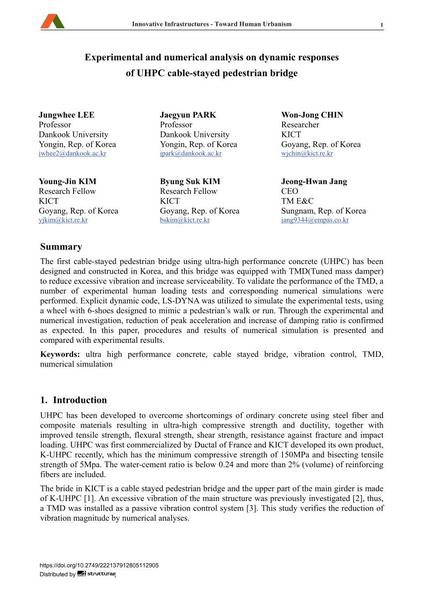Experimental and numerical analysis on dynamic responses of UHPC cable-stayed pedestrian bridge

|
|
|||||||||||
Bibliographic Details
| Author(s): |
Jungwhee Lee
Jaegyun Park Won-Jong Chin Young-Jin Kim Byung Suk Kim Jeong-Hwan Jang |
||||
|---|---|---|---|---|---|
| Medium: | conference paper | ||||
| Language(s): | English | ||||
| Conference: | 18th IABSE Congress: Innovative Infrastructures – Towards Human Urbanism, Seoul, Korea, 19-21 September 2012 | ||||
| Published in: | IABSE Congress Seoul 2012 | ||||
|
|||||
| Page(s): | 2038-2044 | ||||
| Total no. of pages: | 7 | ||||
| DOI: | 10.2749/222137912805112905 | ||||
| Abstract: |
The first cable-stayed pedestrian bridge using ultra-high performance concrete (UHPC) has been designed and constructed in Korea, and this bridge was equipped with TMD(Tuned mass damper) to reduce excessive vibration and increase serviceability. To validate the performance of the TMD, a number of experimental human loading tests and corresponding numerical simulations were performed. Explicit dynamic code, LS-DYNA was utilized to simulate the experimental tests, using a wheel with 6-shoes designed to mimic a pedestrian’s walk or run. Through the experimental and numerical investigation, reduction of peak acceleration and increase of damping ratio is confirmed as expected. In this paper, procedures and results of numerical simulation is presented and compared with experimental results. |
||||
| Keywords: |
ultra-high performance concrete vibration control numerical simulation TMD cable stayed bridge
|
||||
